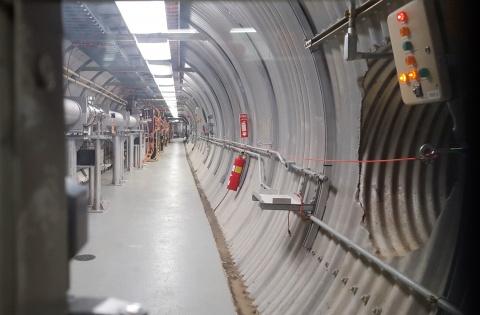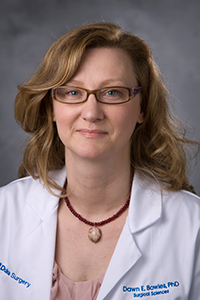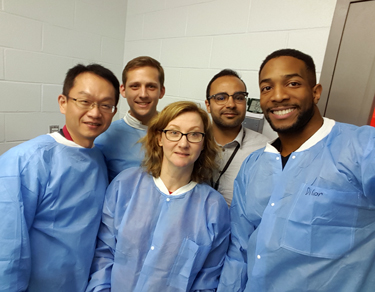
Photo: The galactic cosmic ray simulator at the NASA Space Radiation Laboratory allows investigators to simulate a variety of space environments using different radiation beams. The current system was completed in late 2016.
When we admire a clear blue sky, or enjoy a striking sunset, we seldom appreciate the constant protection that Earth’s atmosphere provides. Our planet’s invisible shield continuously performs a delicate balancing act: allowing enough of the sun’s radiation to filter through and sustain life, while expelling enough to maintain a stable living environment. For NASA astronauts traveling outside of Earth’s protection, however, cosmic radiation can create some out-of-this-world problems.

In late 2015, NASA recruited 9 principal investigators to its Space Radiation Element program to mitigate the harmful effects of space radiation on astronaut health. Duke Surgery’s Dawn Bowles, PhD, Division of Surgical Sciences, was chosen to work with a transdepartmental team of researchers at Duke to examine the effects of space radiation on cardiovascular health, and the possibility of creating a biological defense for astronauts.
“Astronauts in space are bombarded with high-energy protons and particles that can blast through cells like a cannonball,” says Dr. Bowles. “The intensity of radiation from the sun and galactic cosmic rays is very different from an x-ray. Because we are seldom exposed to this type of radiation, very little research has been conducted on its cardiovascular effects, up until now.”
At NASA’s Space Radiation Laboratory (NSRL) at Brookhaven National Laboratory, the effects of cosmic radiation can be tested without leaving our atmosphere using mice as a human proxy and a galactic ray simulator to create the cosmic radiation, one of only a few such devices in the world. The methodology was finished in late 2016, and trials commenced soon after. Dr. Bowles’ study allows for testing the long-term effects of radiation on cardiac function, rather than acute injury. By June 2017, 7 months after research began, she notes that radiation may cause slight cardiac degradation, but it is too early to tell for sure.
To better understand how radiation affects a living organism, Dr. Bowles says she is focusing on more than just the physiology of cardiac function. “We are most interested in the molecular signature left behind after radiation exposure, to see what changes take place at a molecular level,” she explains. Understanding these changes would help to develop a biological protection against radiation, rather than just a physical one.

To this end, Dr. Bowles has partnered with Cardiothoracic Surgery resident Muath Bishawi, MD, MPH. In addition to helping with echocardiogram analysis, Dr. Bishawi is working in the Truskey Lab at Duke to develop a model that would allow testing radiation effects on real human cells.
“In the lab, I am using tissue-engineered blood vessels (TEBVs) to further study and characterize radiation injury to the endothelium,” says Dr. Bishawi. “The advantage of this system is that it allows us to test human cells of many different origins and types directly. Our group has also been looking at ways to send the TEBVs to the International Space Station.”
Cardiovascular degeneration from radiation is of concern, but exposure can also negatively impact neurocognition, behavior, and ophthalmologic health. Dr. Bowles is collaborating with other departments at Duke to create a more holistic profile of radiation effects.
In the Duke Eye Center, Michael Allingham, MD, PhD, and Ponugoti Vasantha Rao, PhD, will examine the effects of space radiation on two tissues known to be vulnerable to other forms of radiation. Dr. Rao’s work will focus on whether radiation causes cataracts on the crystalline lens of the eye, while Dr. Allingham will examine effects on the retina. “To our knowledge, no one has had the opportunity to evaluate these questions. We hope that these studies will give us a better understanding of the impact that long-term space travel could have on the human eye,” says Dr. Allingham.
To Dr. Bowles, this collaborative approach is an important element of her research, and she hopes that it will continue even after the study is complete. “It’s important to note that we are biobanking all organs and tissues available for research after we are finished. We want to make sure that what we have is available to other investigators,” she says.
Dr. Bowles’ study, titled “Proteomic Signatures of Space Radiation–Induced Cardiovascular Degeneration,” will continue through May 2020. In collaboration with other scientists from across the United States, her research will help NASA safely transport astronauts back to the moon, to Mars, and beyond.